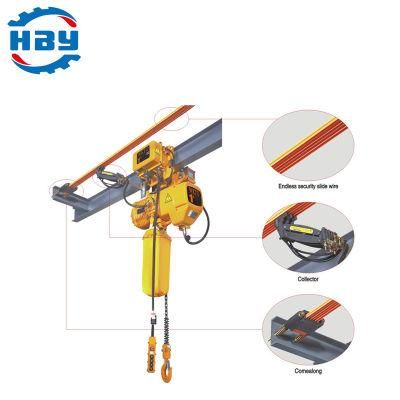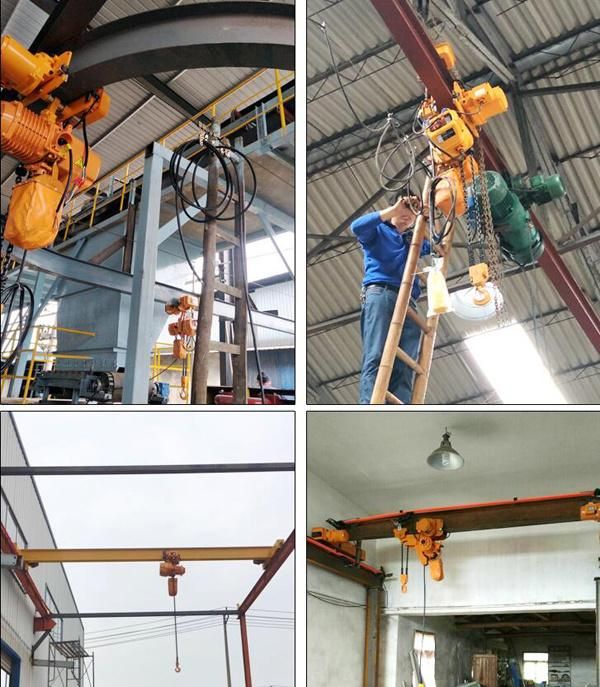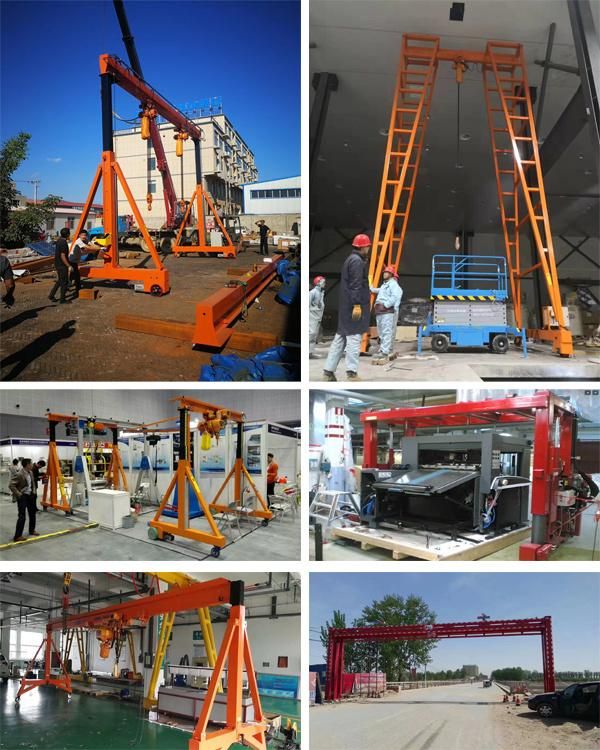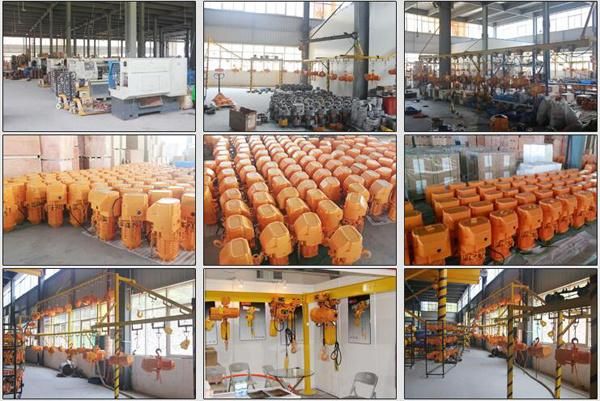
5 Ton I Beam or H Beam Use Chain Hoist
HENAN BOY MACHINERY CO., LTD.- Application:Gantry Crane, Bridge Crane, Tower Crane, Single Grinder Crane, Lifting Platform, Small Crane
- Type:Chain Hoist
- Sling Type:Chain
- Lift Speed:2~8m,min
- Maximum Lifting Height:12m
- Chain Falls:2
Base Info
- Certification:CE, ISO9001:2000
- Condition:New
- Color:Yellow
- Transport Package:Wooden Box
- Specification:STANDARD
- Trademark:HBY
- Origin:Henan
- Production Capacity:500 Per Month
Description
110/220
240/380
415/44050/60 0.2 70-210 1 315 212 142 231 0.4 2 325 220 142 231 0.4 3 340 250 142 231 0.4 5 400 291 142 231 0.75 7.5 400 291 142 231 0.75 10 500 370 142 231 0.75
Typical Applications:


How a manual chain hoist works
The physics behind a chain hoist are very simple and have been used for lifting heavy objects for a long time. Chain hoist uses a mechanical advantage to transform small force over a long distance to large force over a short distance, this is possible by using multiple larger and smaller gears in the chain hoist mechanism.
To lift a load, chain hoist operator needs to pull down the hand chain, this turns the cog and axle which goes trough the lifting mechanism. Inside the lifting mechanism are multiple gears which increase the mechanical work applied when pulling the hand chain for dozen times using gear ratio, allowing to easily lift loads with multiple ton capacity.
So when the hand chain is pulled, the cog which is rotated by the hand chain turns the drive shaft and gears which turn the load chain sprocket, this also rotates the load chain that is looped over the load chain sprocket and lifts a load. Larger gears move slower than smaller gears, but create more force, this is why chain hoist lifts load very slowly when compared to a hydraulic hoist. At the end of the lifting chain is a grab hook, which allows to easily attach and detach a load. Also, most chain hoist lifting mechanisms have a ratchet or braking system that prevents the load from slipping back, but allows to lower a load by pulling the other side of the hand chain.
Workshops Show:

240/380
415/440
Typical Applications:


How a manual chain hoist works
The physics behind a chain hoist are very simple and have been used for lifting heavy objects for a long time. Chain hoist uses a mechanical advantage to transform small force over a long distance to large force over a short distance, this is possible by using multiple larger and smaller gears in the chain hoist mechanism.
To lift a load, chain hoist operator needs to pull down the hand chain, this turns the cog and axle which goes trough the lifting mechanism. Inside the lifting mechanism are multiple gears which increase the mechanical work applied when pulling the hand chain for dozen times using gear ratio, allowing to easily lift loads with multiple ton capacity.
So when the hand chain is pulled, the cog which is rotated by the hand chain turns the drive shaft and gears which turn the load chain sprocket, this also rotates the load chain that is looped over the load chain sprocket and lifts a load. Larger gears move slower than smaller gears, but create more force, this is why chain hoist lifts load very slowly when compared to a hydraulic hoist. At the end of the lifting chain is a grab hook, which allows to easily attach and detach a load. Also, most chain hoist lifting mechanisms have a ratchet or braking system that prevents the load from slipping back, but allows to lower a load by pulling the other side of the hand chain.
Workshops Show:

